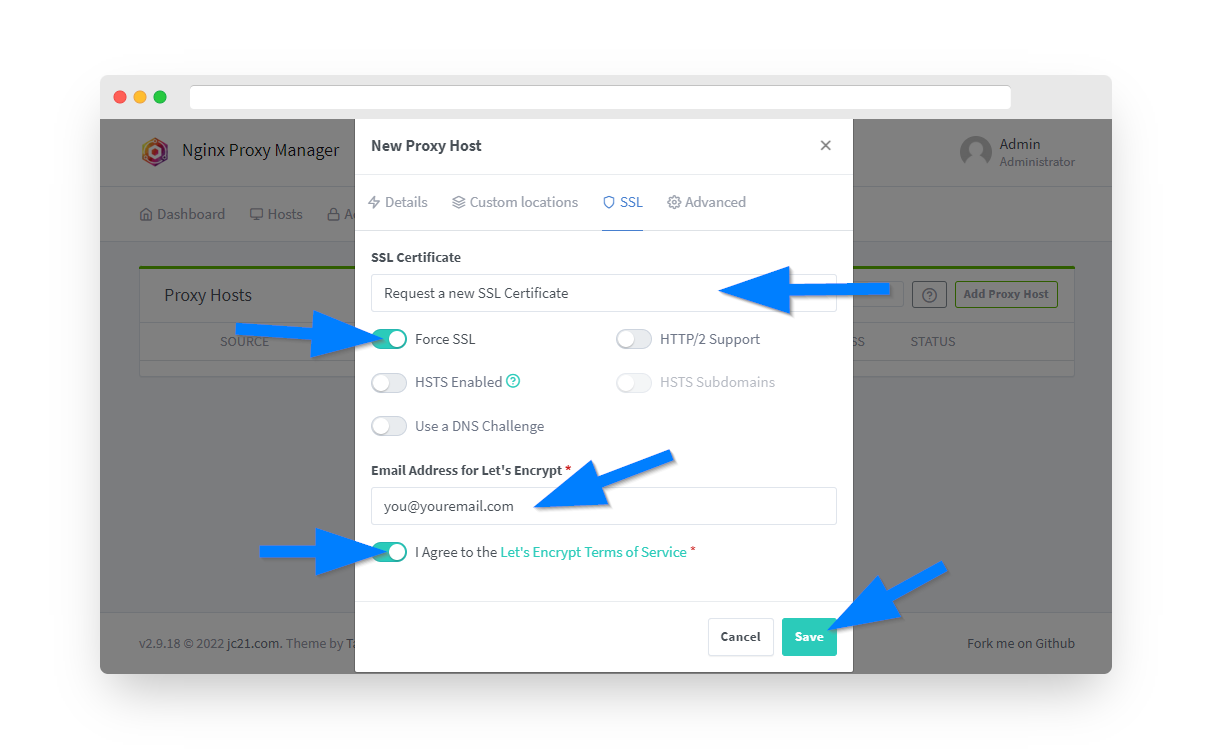1.) To install Motioneye first login to your PrivateRouter and click the System menu. Select Custom Commands then locate FileBrowser and click the RUN button.
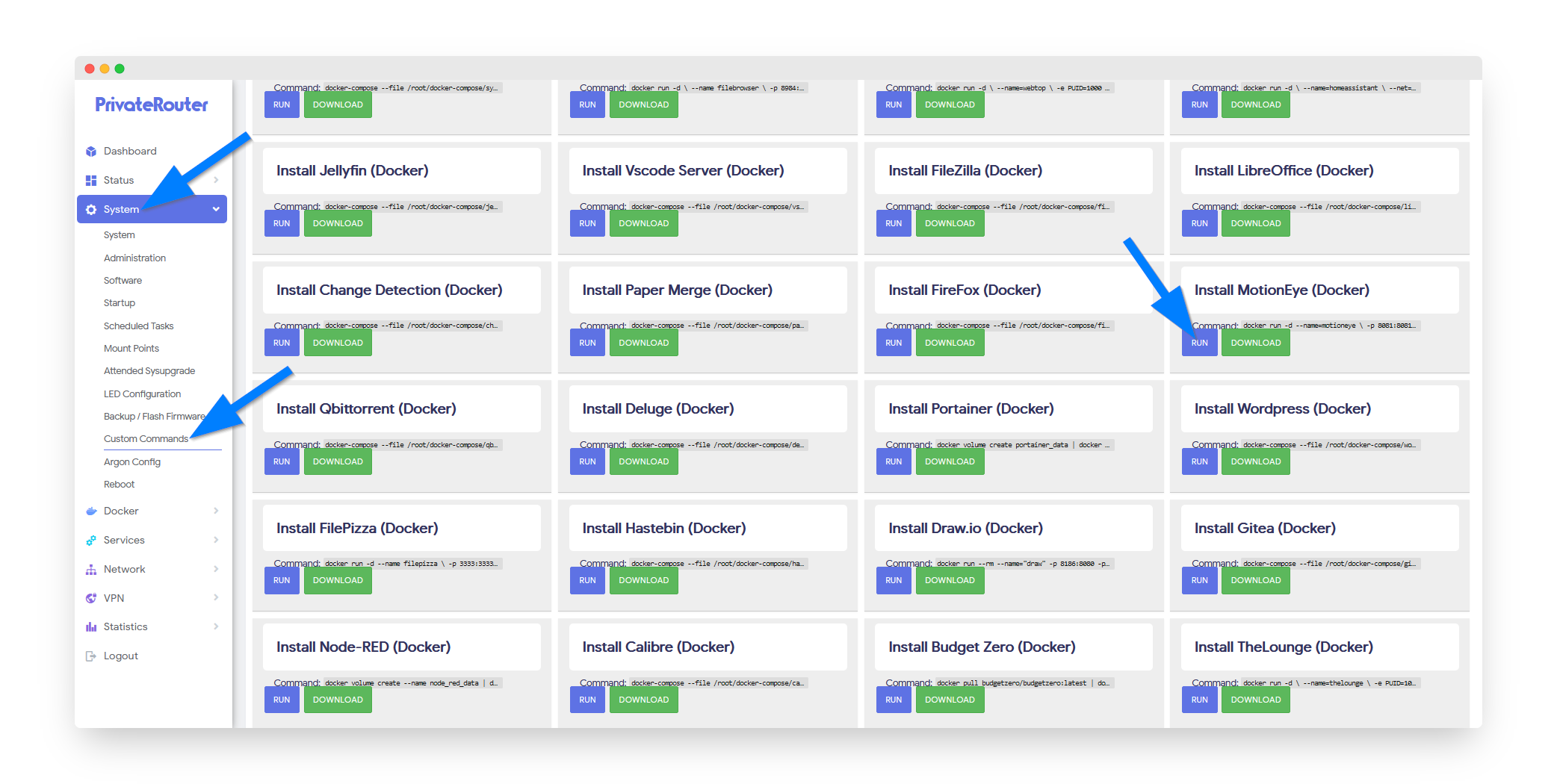
2.) Wait a few minutes for Motioneye to install then click the Docker menu and select Containers. Click the Motioneye web port 8081 to open MotionEye in a new window.
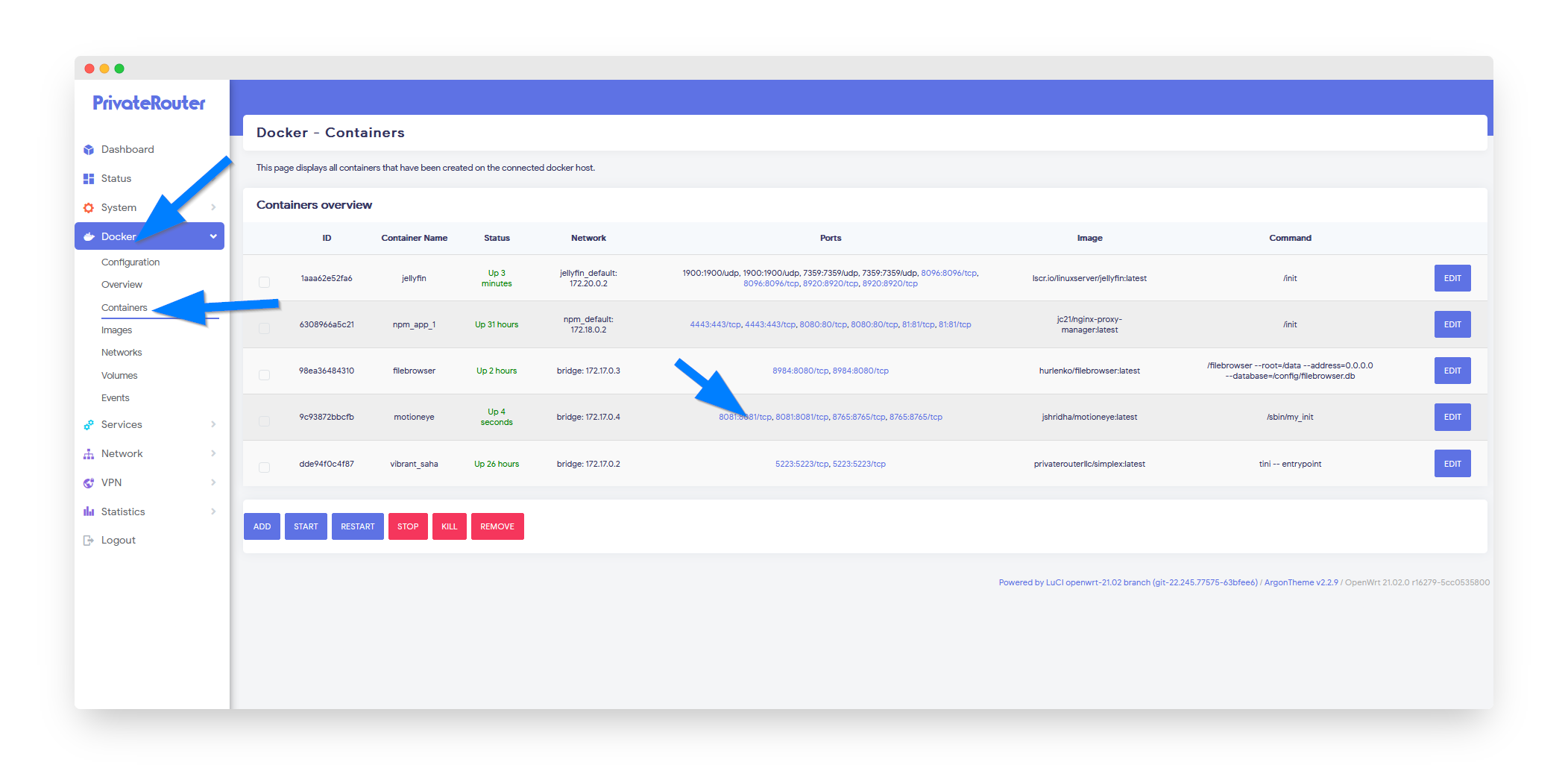
3.) Login to Motioneye with the default username admin and leave the password blank. Make sure to change this default password in the next step.
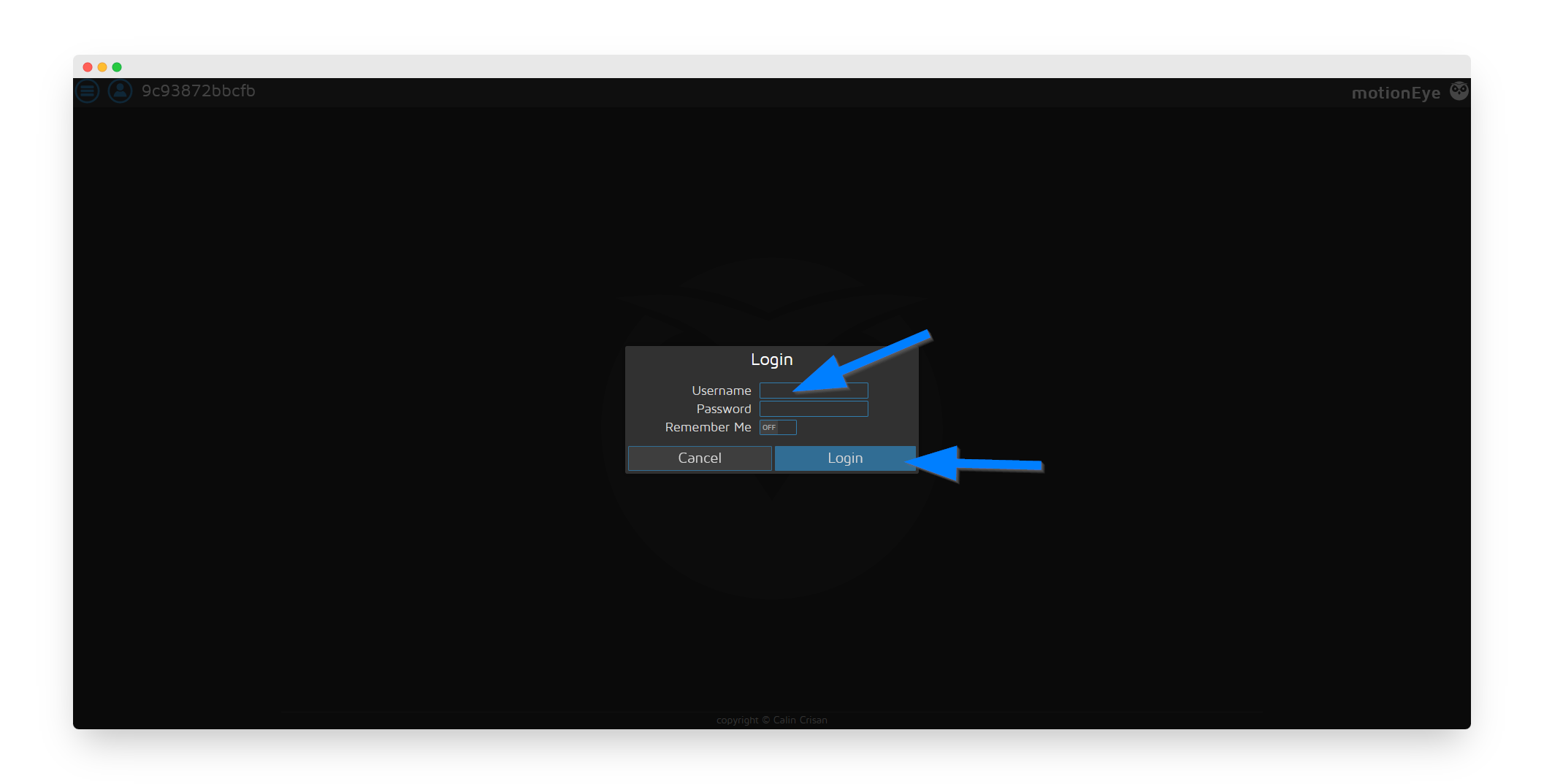
4.) To change the default Motioneye password click the menu icon in the top left and change both the admin and user passwords. Click the Apply button.
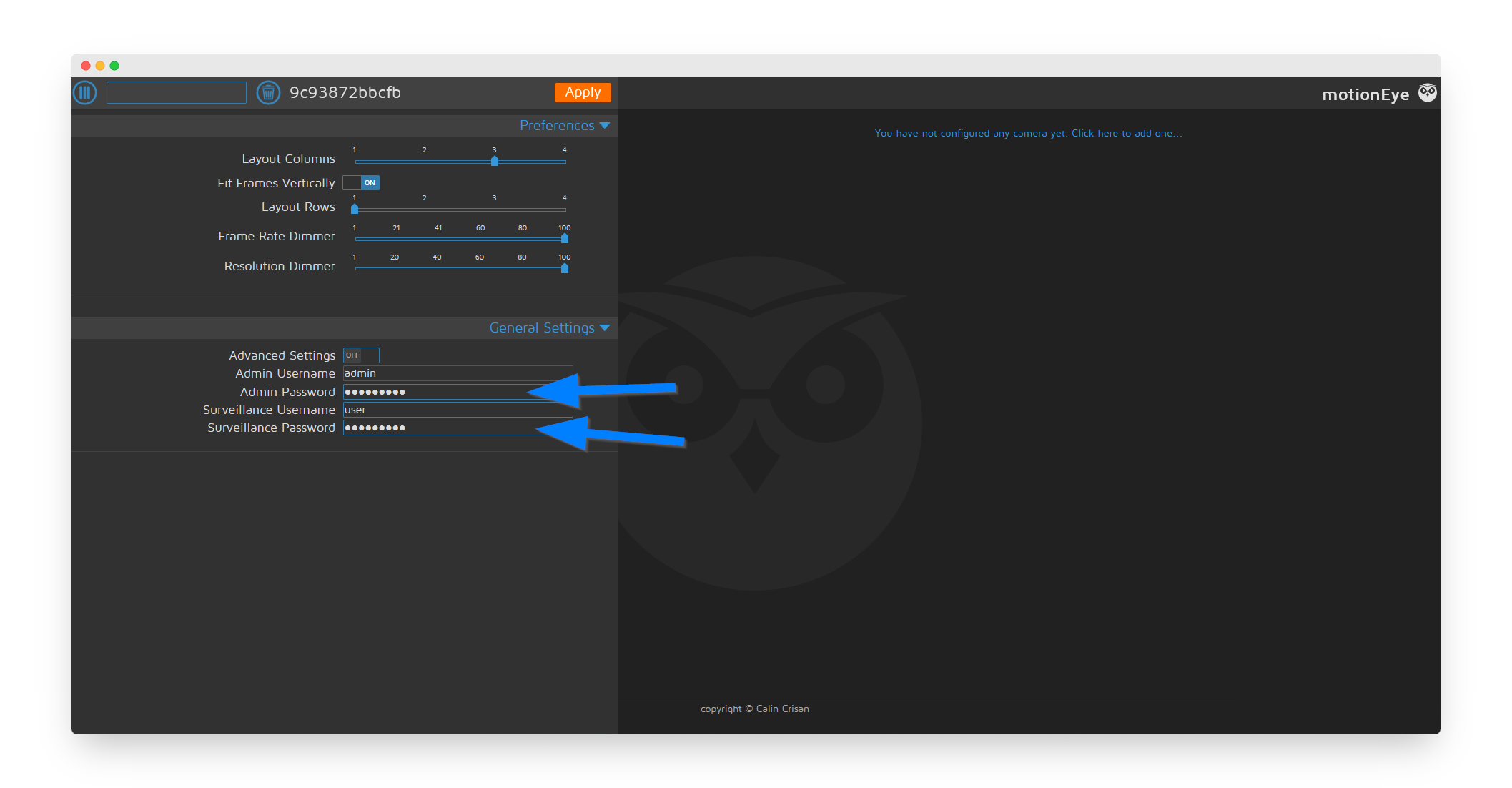
5.) If you already have an IP camera connected to your Wifi router take note of the IP address and click the "configure camera" text link on the main screen.
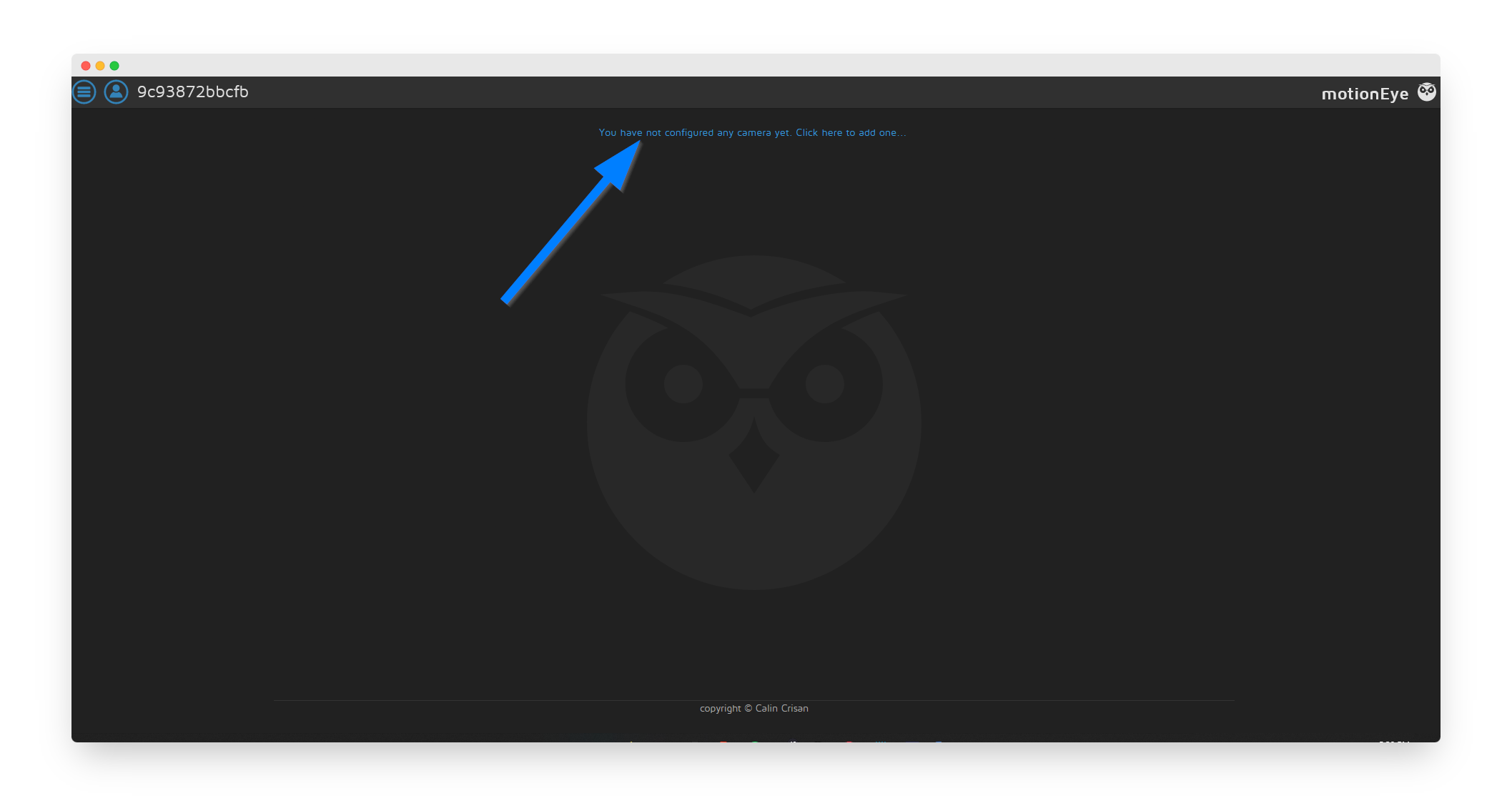
Select Network camera (for most IPcams) and paste the camera URL, username, and password. For the URL the formattiong can be different for each IP cam maker so it's best to login to your IPCAM via the direct IP address to obtain the correct URL format.
Most RSTP IPcams use a format similar to this:
rtsp://username:password@ip_cam_address:rtsp_port/live
If you only wish to access your IPcam locally or via Remote VPN, then you are all set. If you want to setup access to Motioneye via domain then proceed to the next step.
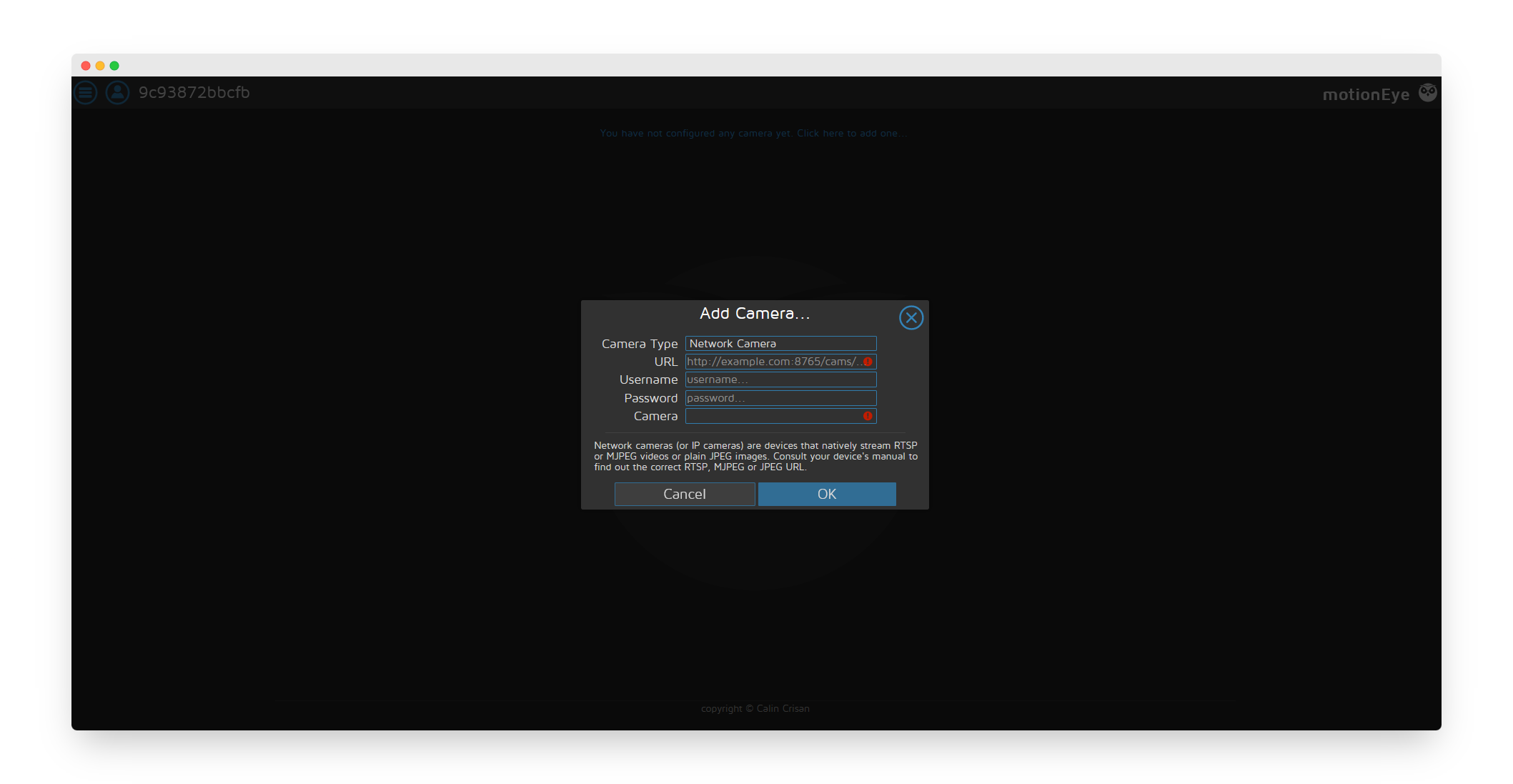
6.) For this next step you must have already installed the Nginx Proxy Manager app to handle domain and SSL. If you have not yet installed Nginx Proxy Manager please follow the tutorial here to complete the install.
Login to Nginx Proxy Manager at http://192.168.0.1:81. If you have not setup a password the default username is [email protected] and default password is changeme.
Once you are logged in click the Hosts menu option then select "Proxy Hosts".
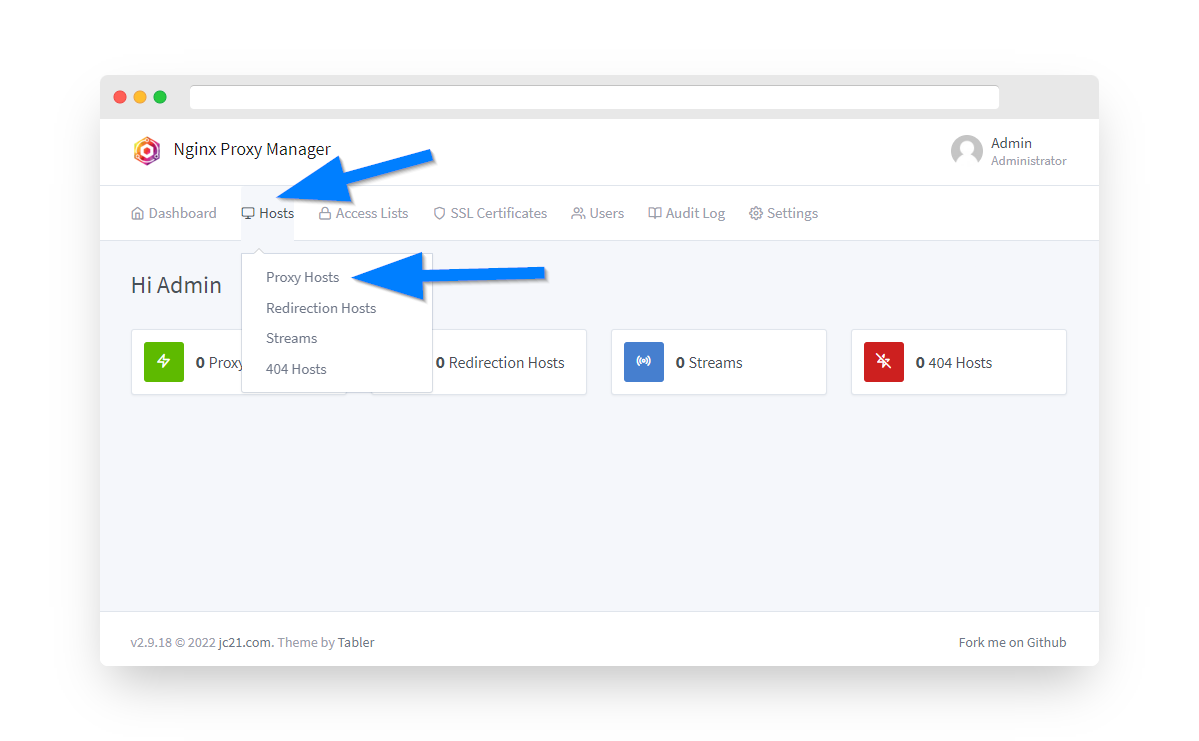
7.) Click the Add Proxy Host button.
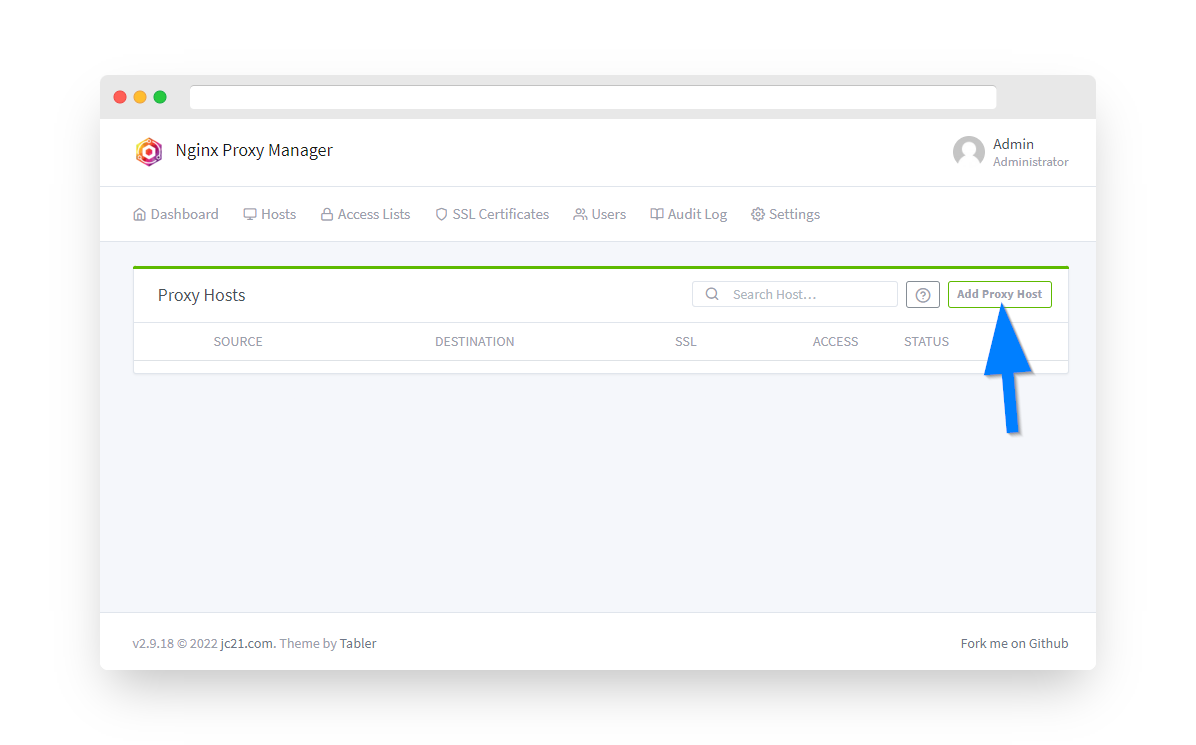
8.) Before proceeding first make sure you have pointed an A record or A Wildcard record with your domain's registrar at your Private VPN Cloud VPN IP address and setup external/internal port forwarding 80/8080 and 443/4443. Then enter the domain name or subdomain under Domain Names. (example: ipcam.yourdomain.com) Select "https" under Scheme and the enter your Router's IP address (192.168.0.1). For the port enter Motioneye's port number 8081. Click the SSL tab next.
**For Motioneye make sure to set the Websockets Support switch to ON**
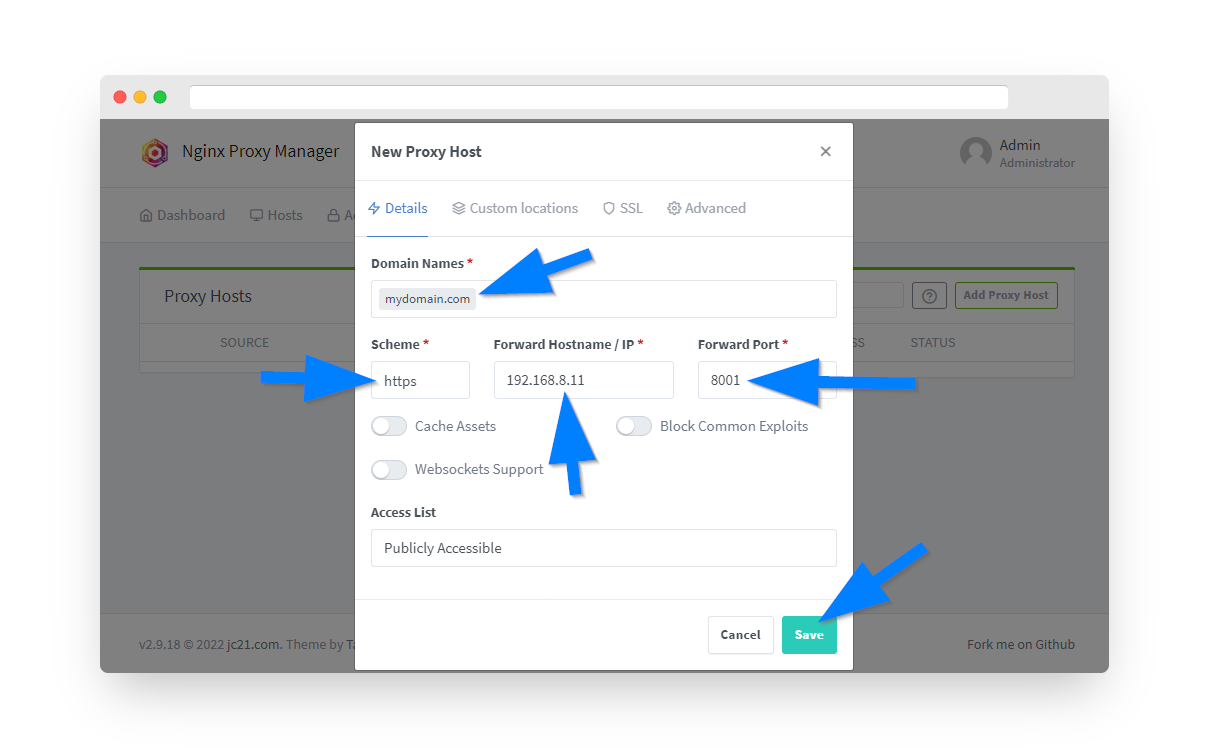
9.) Under the SSL tab now proceed with obtaining a free Let's Encrypt SSL certificate. Under the SSL Certificate dropdown select "Request a new SSL Certificate with Let's Encrypt". Click the "Force SSL" option switch and enter an email address to register your SSL cert by with Let's Encrypt. Finally, click the "I Agree" switch on Let's Encrypt Terms and Conditions and click the save button. After a few moments you should see your new proxy host on the Nginx Proxy Manager dashboard with a green "online" status. To verify things are working open a new browser window and enter in your domain name. You should see Motioneye is now loading through your domain instead of the local IP address.
